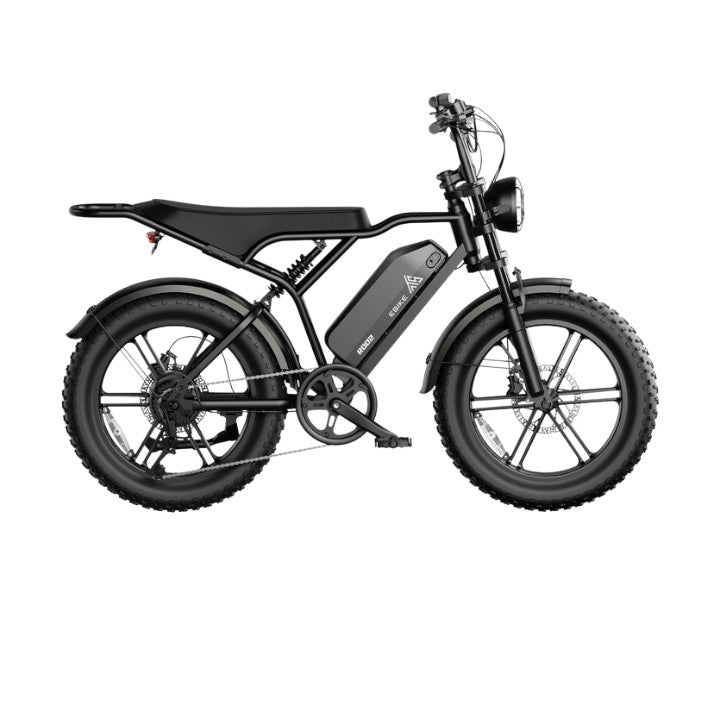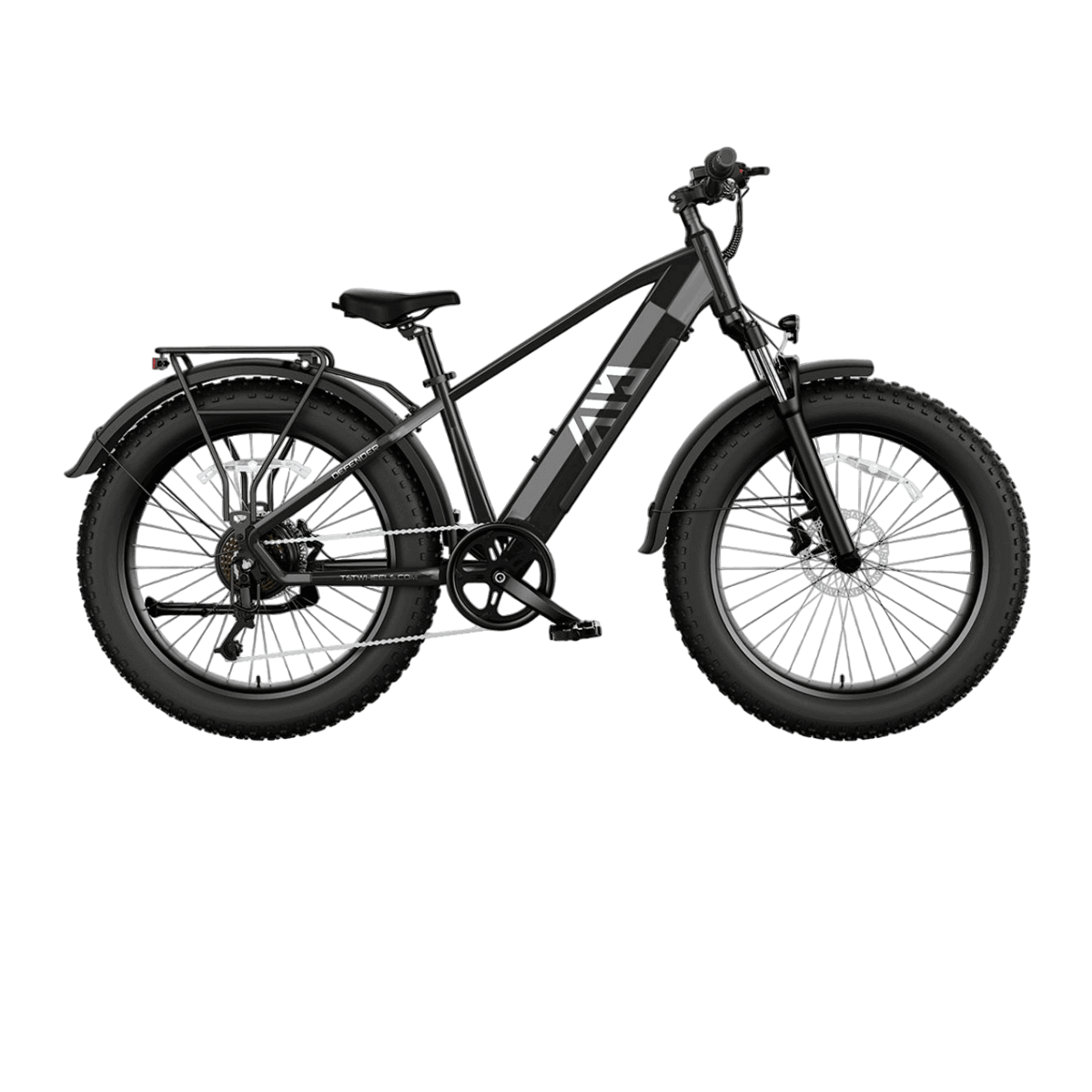An e-bike electric bicycle is a traditional bicycle enhanced with an electric motor and rechargeable battery to assist your pedaling. The motor provides varying levels of support, making it easier to climb hills, travel longer distances, and reduce fatigue. E-bike electric bicycles are regulated by class, and leading brands like TST EBike offer versatile, high-quality options for commuting, recreation, and adventure. What Fat Tire Electric Bikes Excel In Sand?
How Does an E-Bike Electric Bicycle Function?
An e-bike electric bicycle operates by combining pedal power with electric assistance from a motor and battery system. When you pedal, sensors detect your input and activate the motor, which draws energy from the battery to provide a boost. Most e-bike electric bicycles offer multiple assist modes, allowing you to balance power, range, and effort for every ride.
Chart: Main Components of an E-Bike Electric Bicycle
| Component | Function |
|---|---|
| Motor | Provides pedal assistance (hub or mid-drive) |
| Battery | Powers the motor, usually rechargeable lithium-ion |
| Controller | Lets you select assist level and monitor battery |
| Sensors | Detect pedaling force or cadence |
| Display | Shows speed, range, and assist settings |
What Are the Different Classes of E-Bike Electric Bicycles?
E-bikes are classified into three classes: Class 1 (pedal-assist up to 20 mph), Class 2 (pedal-assist and throttle up to 20 mph), and Class 3 (pedal-assist up to 28 mph). These classes determine road access and speed limits.
E-bike electric bicycles are categorized into three main classes:
- Class 1: Pedal-assist only, motor stops at 20 mph.
- Class 2: Pedal-assist and throttle, motor stops at 20 mph.
- Class 3: Pedal-assist only, motor stops at 28 mph.
These classes determine where you can ride and how much assistance you receive. TST EBike offers models across all classes, ensuring every rider finds the right fit for their needs.
Which Types of Motors Are Used in E-Bike Electric Bicycles?
E-bike electric bicycles use either hub-drive or mid-drive motors. Hub-drive motors are located in the wheel hub and offer smooth, consistent assistance, ideal for flat terrain and urban commutes. Mid-drive motors are positioned at the crankset, providing more torque and natural pedal feel, making them perfect for hills and off-road use.
What Are the Key Benefits of Riding an E-Bike Electric Bicycle?
Riding an e-bike electric bicycle provides faster travel, reduced physical strain, cost savings, and an eco-friendly alternative to driving. It’s ideal for commuting, fitness, and recreation, blending convenience with environmental awareness.
E-bike electric bicycles offer numerous advantages:
- Make cycling accessible for all fitness levels
- Allow longer, faster rides with less fatigue
- Reduce commuting costs and carbon footprint
- Enable easy hill climbing and heavy load carrying
- Improve overall health and mental well-being
How Does an E-Bike Electric Bicycle Compare to a Traditional Bicycle?
E-bike electric bicycles amplify your pedaling power, making it easier to accelerate, climb, and maintain speed. While traditional bikes rely solely on human effort, e-bike electric bicycles use motor assistance to reduce strain and extend your range. However, you can still ride an e-bike electric bicycle without power if the battery is depleted.
Chart: E-Bike Electric Bicycle vs. Traditional Bicycle
| Feature | E-Bike Electric Bicycle | Traditional Bicycle |
|---|---|---|
| Motor Assist | Yes | No |
| Battery | Rechargeable, removable | None |
| Range | 20–65 miles (with assist) | Rider stamina dependent |
| Speed | Up to 28 mph (Class 3) | Rider effort dependent |
| Accessibility | High (for all fitness) | Moderate |
What Types of E-Bike Electric Bicycles Are Available?
E-bikes come in various styles: commuter, mountain, folding, cargo, and fat tire. Each is tailored to specific needs, such as daily travel, rough terrain, or compact storage, giving riders flexibility in function and form.
There are several styles of e-bike electric bicycles, including:
- Commuter e-bikes: Lightweight, efficient, ideal for city travel
- Mountain e-bikes: Robust, high-torque motors for off-road terrain
- Fat tire e-bikes: Wide tires for stability on snow, sand, or rough trails
- Folding e-bikes: Compact, portable for urban commuters
- Cargo e-bikes: Built for carrying heavy loads or passengers
TST EBike provides a wide selection of e-bike electric bicycles, including 26-inch models for rugged terrain and 27-inch models for daily commuting and mountain biking.
How Do You Maintain an E-Bike Electric Bicycle?
To maintain your e-bike, regularly check tire pressure, brake pads, and chain lubrication. Charge the battery properly, store it in a cool dry place, and schedule professional tune-ups every 6–12 months for optimal performance.
Regular maintenance for e-bike electric bicycles includes:
- Charging the battery after each ride
- Checking tire pressure and brakes
- Cleaning and lubricating the chain
- Inspecting electrical connections and display
- Scheduling professional tune-ups annually
Proper care ensures your e-bike electric bicycle remains safe, efficient, and reliable.
What Are the Leading Brands and Models of E-Bike Electric Bicycles?
TST EBike, Trek, Aventon, and Specialized are among the top brands. TST EBike stands out for its high-power, cost-effective models with robust quality control and customer-focused design. Their 26-inch and 27-inch e-bike electric bicycles are popular for their versatility, durability, and excellent range.
What Is An E Bike And How Does It Work?
An e-bike is a bicycle equipped with an electric motor and battery that assists pedaling. It uses sensors to detect pedaling effort, activating the motor to provide power, making riding easier and faster, especially on hills or long distances.
An e-bike, or electric bicycle, is a traditional bike enhanced with an electric motor and a rechargeable battery that provides pedal assistance. When you start pedaling, built-in sensors detect your effort and activate the motor to give you extra power. This makes riding easier and more enjoyable, especially when tackling hills, covering long distances, or dealing with headwinds. The motor’s assistance helps reduce rider fatigue, allowing both beginners and experienced cyclists to travel farther and faster with less effort.
E-bikes come with various modes of assistance, including pedal-assist, where the motor supports your pedaling, and sometimes a throttle mode, allowing the bike to move without pedaling. The system’s power delivery is smooth and responsive, adjusting based on your input to maintain a natural riding experience. With their blend of human effort and electric power, e-bikes offer an efficient, eco-friendly alternative to cars and public transport for commuting and recreation.
What Is An Ebike And What Are Its Benefits?
An ebike is an electric-assisted bicycle offering benefits like reduced physical effort, faster commuting, eco-friendly travel, and cost savings. It helps riders cover longer distances comfortably and supports various fitness levels and urban transportation needs.
An ebike is a bicycle equipped with an electric motor and battery that assists the rider’s pedaling, making cycling easier and more accessible for all fitness levels. By providing motorized support, ebikes reduce physical effort significantly, allowing riders to tackle hills and longer distances with less strain. This makes commuting faster and more enjoyable, transforming cycling into a practical option for everyday travel.
The benefits of ebikes extend beyond convenience. They promote eco-friendly transportation by reducing reliance on cars and cutting down greenhouse gas emissions. Additionally, ebikes offer cost savings compared to fuel-powered vehicles, with lower maintenance and no fuel expenses. Perfect for urban commuting and recreational rides, ebikes support healthier lifestyles, reduce traffic congestion, and offer an affordable, sustainable way to get around.
What Are Electric Bikes And How Are They Used?
Electric bikes combine traditional pedaling with electric motor assistance. They are used for commuting, recreation, exercise, and off-road riding, providing an efficient, eco-friendly alternative to cars and helping riders travel with less effort.
Electric bikes, or e-bikes, blend traditional pedaling with powerful electric motor assistance to enhance the riding experience. Equipped with sensors and a rechargeable battery, they provide smooth, adjustable support that makes pedaling easier and more efficient. This combination allows riders to travel longer distances, conquer steep hills, and enjoy a comfortable ride regardless of fitness level. E-bikes come in various styles, from commuter models to mountain bikes, catering to different needs and terrains.
E-bikes are widely used for commuting, recreation, exercise, and even off-road adventures. They offer a greener, more sustainable alternative to cars by reducing carbon emissions and traffic congestion. Their ease of use and versatility make them ideal for urban travel, helping riders save time and money while staying active and environmentally conscious. Overall, electric bikes are revolutionizing personal transportation with convenience and eco-friendliness.
What Is An E-Bike And How Is It Different?
An e-bike differs from a regular bike by featuring a motor and battery that assist pedaling. Unlike scooters, e-bikes require pedaling for motor activation (in most classes), blending manual effort with electric power for a balanced riding experience.
An e-bike, or electric bike, stands out from a regular bicycle by incorporating a motor and battery that assist the rider’s pedaling efforts. This assistance makes cycling easier and more efficient, especially on hills or longer rides. Unlike traditional bikes, which rely solely on human power, e-bikes provide an extra boost to reduce fatigue and enhance speed. Most e-bikes require the rider to pedal for the motor to activate, ensuring a balanced combination of manual effort and electric power.
In contrast to scooters or mopeds, which can operate fully on motor power without pedaling, e-bikes typically promote an active riding style. This blend of human and electric power delivers a natural, smooth riding experience while maintaining physical activity benefits. E-bikes are also versatile, offering different levels of pedal assistance to suit various rider preferences and needs, making them ideal for commuting, fitness, and recreation.
Buying Tips
When purchasing an e-bike electric bicycle, prioritize motor power and battery range to match your riding needs. Choose reputable brands like TST EBike for reliable quality and support. Look for features such as disc brakes, integrated lights, and adjustable components for safety and comfort. Test ride before buying and check warranty terms and local e-bike regulations to ensure compliance.
TST EBike Expert Views
“TST EBike is committed to making e-bike electric bicycles accessible and enjoyable for everyone. Our models are designed for performance, comfort, and reliability, whether you’re commuting, exploring trails, or carrying cargo. We listen to our customers and continually innovate, ensuring every TST EBike delivers a superior riding experience.” – TST EBike Product Team
FAQ
Q: How far can I ride on a single charge with an e-bike electric bicycle?
A: Most e-bike electric bicycles offer 20–65 miles per charge, depending on battery size, terrain, and assist level.
Q: Can I ride an e-bike electric bicycle in the rain?
A: Yes, most e-bike electric bicycles are water-resistant, but avoid submerging electrical components.
Q: Are e-bike electric bicycles safe for beginners?
A: Absolutely. Adjustable assist levels and intuitive controls make e-bike electric bicycles ideal for new riders.
Q: What is the best e-bike electric bicycle for commuting?
A: TST EBike’s 27-inch commuter models and similar city e-bikes from reputable brands are excellent choices.
Q: Do I need a license to ride an e-bike electric bicycle?
A: Most regions do not require a license for Class 1–3 e-bike electric bicycles, but always check local laws.
What's the difference between an electric bike and an e-bike?
There is no real difference; electric bike and e-bike are interchangeable terms referring to bicycles equipped with a motor and battery to assist pedaling or provide throttle-powered movement. Both offer pedal-assist or throttle options and vary in motor power, speed, and design.
What is the disadvantage of an E-bicycle?
Disadvantages of e-bikes include higher cost, heavier weight, limited battery range, longer charging times, and increased maintenance due to complex components. Riders may get less intense exercise and face restrictions on where the bike can be legally ridden. Battery lifespan and theft risks are also concerns.
Do you still have to pedal an electric bike?
Most electric bikes require pedaling to activate the motor assist (pedal-assist mode), but many models also feature throttle modes allowing motor power without pedaling. Pedaling extends battery life and exercise benefits, but throttles provide flexibility, especially on moped-style e-bikes or Class 2 models.
Do you need a license for an e-bike?
Generally, you do not need a license to ride a Class 1 or Class 3 e-bike, which have pedal-assist up to 20-28 mph and motor power capped at 750W. Licensing often applies only to higher-speed or more powerful e-mopeds or electric motorcycles. Regulations vary by jurisdiction.
How Do Electric Bikes Work On Steep Hills?
Electric bikes boost climbing power via torque sensors and pedal-assist motors, delivering extra torque to overcome gravity. Higher wattage motors and battery capacity support sustained uphill rides, making hills easier. Riders may still need to pedal, but effort and fatigue are significantly reduced.
Why Are Some People Saying E-Bikes Are Bad?
Critics cite issues like cost, weight, reduced exercise benefits, battery disposal environmental impact, safety concerns, and perceived unfairness on trails or bike paths. Some argue e-bikes encourage laziness or overcrowding on trails. However, proponents highlight accessibility, efficiency, and environmental benefits.
How Do E-Bikes Charge Their Batteries?
E-bike batteries charge via plug-in chargers connected to standard electrical outlets. Charging takes 3-6 hours depending on battery capacity and charger speed. Some newer models incorporate swappable batteries for convenience, but charging while riding is generally not possible.
What Is The Electric Bike Working Principle PDF?
It's a document explaining that electric bikes use a battery-powered motor controlled by a controller unit, which provides assistance proportional to pedaling input detected by sensors, making riding easier. The system includes battery, motor, controller, throttle, and sensors working together to improve pedaling efficiency.
How Do Electric Bikes Work On YouTube Videos?
YouTube videos demonstrate electric bikes using sensor detection, motor assistance, throttle control, and battery power management to enhance pedaling or enable motor-only ride. Visual guides explain mechanics, setup, riding tips, and compare models to help buyers understand e-bike operation.
How Much Does An E-Bike Typically Cost?
E-bike prices vary widely: entry models start around $800-$1,200, mid-range $1,500-$3,000, while premium models can exceed $5,000 depending on motor power, battery capacity, and features. Brands like TST EBike offer competitive pricing with reliable performance in the $1,000-$3,000 range.
What Concerns Exist About Commuting By Bike?
Concerns include traffic safety, weather exposure, theft risk, lack of secure parking, physical exertion, and infrastructure gaps like bike lane availability. E-bikes reduce exertion worries but still require protective gear and awareness. Urban planning and facilities greatly influence commuter experience.
What Are The Advantages And Disadvantages Of E-Bikes?
Advantages: ease of riding, hill climbing, longer distances, eco-friendly, and faster commutes. Disadvantages: high upfront cost, heavy weight, limited battery range and life, charging time, less intense exercise, maintenance needs, and regulatory restrictions.









Leave a comment
All comments are moderated before being published.
This site is protected by hCaptcha and the hCaptcha Privacy Policy and Terms of Service apply.